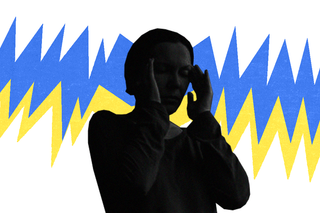
What’s With the Mysterious ‘Havana Syndrome’ Affecting U.S. Diplomats?
The Havana Syndrome is causing confusion, dizziness, headaches, mostly in American diplomats, confounding the scientific community.

Is it a microwave weapon? Is it a laser beam controlled by enemies afar? Is mind-control by cicadas? Whatever ‘Havana Syndrome’ is, the United States government has taken it seriously enough to pass a bill protecting its officials from it. The mystery illness is said only to affect American diplomats, and the eye of suspicion has now been cast on India.
Three days ago, a U.S. Intelligence officer visiting New Delhi experienced symptoms linked to the enigmatic syndrome. These include loss of balance, headaches, dizziness, and more. While speculations about “attacks” abound, the internet has been having a field day for a while, unpacking what it all means because nobody seems to be sure. “Yeah, I have Havana Syndrome. I’m Havana bad time,” as the memes go.
Scientifically, the consensus on what causes an illness exclusive to U.S. diplomats alone is divided. The details get strange: affected officials have described the feeling as subject to an “invisible beam of energy.” It all began in 2017 in, you guessed it, Havana, Cuba. Central Intelligence Agency (C.I.A.) officials started to experience disruptive symptoms that the government shut down its agency in Havana and brought the diplomats back to home turf.
Since then, scientists have found the syndrome in Russia, Kyrgyzstan, Colombia, Uzbekistan, China, and now, India. What has remained common is that only American diplomats and spies seem to be the casualties once again. Both Trump and Biden administrations have since suspected that a deliberate attack could be behind the mysterious phenomenon.
But what makes the Havana Syndrome a point of serious discussion and legislation, and not a wild conspiracy theory, is the serious consideration heavyweights in scientific and academic communities have given it.
A 2018 study from the University of Pennsylvania found injuries in the brains of people who experienced the syndrome but without any evidence of head trauma. Researchers published the results of this study in 2019 in JAMA, where they concluded that those who experienced the different and heterogeneous symptoms had diminished white and grey matter in their brains. It was like a “concussion without a concussion,” a specialist told The New Yorker.
Related on The Swaddle:
A ‘Mystery’ Illness Has Sickened 250+ People in Andhra Pradesh
A US National Academies report further found that the symptoms are consistent with ‘energy pulses.’ This gave rise to the infamous ‘microwave beam‘ theory that sounds even more like we live in an elaborate science fiction plot than in real life. Indeed, in light of the studies and papers, the idea that U.S. officials were under attack by “sci-fi weapons” made headlines worldwide.
But the microwave theory has deeper roots than it would seem. It goes back to World War 2 and, subsequently, the Cold War. James Lin, a University of Illinois professor, harbored the suspicion that the events in Cuba were connected to microwaves, based on his research in the 1970s, at the height of the Cold War. The Soviet and the American sides both experimented furiously with science and how to best one another through it. Nothing was off the table, including mind-control and, of course, microwaves. The technology exists, and it could be a targeted attack responsible for the mysterious illness among U.S. diplomates, Lin, and other experts say.
Some have vociferously disagreed: “This should be considered and treated as a health concern, not as a political issue,” said Sergio Della Sala, professor of human cognitive neuroscience at the University of Edinburgh.
Other experts have also rubbished the notion. Robert W Baloh, a professor of neurology from UCLA, concludes that the Havana Syndrome is nothing but a mass ‘psychogenic illness‘ — or the reverse of the placebo effect, where individuals experience symptoms without an underlying cause through the “power of suggestion.” Researchers say that doctors and researchers “reframing” common ailments such as dizziness, headaches, and others could also be behind the spread of the illness. Further, “concussion-like” symptoms due to “acoustic soundwaves” have been reported when the telephone was first introduced when paranoia abounded about what the devices could do.
Still, no one has conclusively debunked the condition. Leaving no stone unturned, some have suggested that crickets or cicadas are the suspected culprits, according to a ProPublica report, which concluded that nobody has any idea as to what happened. Meanwhile, the C.I.A. Director, William Burns, is convinced that Russia is behind the “attack.”
However, the internet’s wry amusement with the mysterious unfolding of events is worth a different look by itself. Nobody seems to be taking this seriously except the supposed grown-ups in the room. The theories surrounding the illness carry an air of a bad parody of a science fiction story. But this is real life, which makes it all the more confusing. Are we supposed to take this seriously? At least the Cold War experiments had an element of dark intrigue because they involved innocents. Mass mind control experiments by the C.I.A was a thing that happened, and real lives were affected. Here, however, it appears that the tables have been turned on the C.I.A. Whatever the actual cause maybe — if any at all — it is unlikely that people will empathize any time soon. After all, the agents notorious for nefarious secret activities abroad may finally be facing the music — or sound beams, if you will.
“The mystery of Havana syndrome could be its real power,” writes Gordon Corera for The BBC. Indeed.
Rohitha Naraharisetty is a Senior Associate Editor at The Swaddle. She writes about the intersection of gender, caste, social movements, and pop culture. She can be found on Instagram at @rohitha_97 or on Twitter at @romimacaronii.
Related


Eating Dairy Fat May Not Be as Harmful to Heart Health as We Think, Say Researchers
